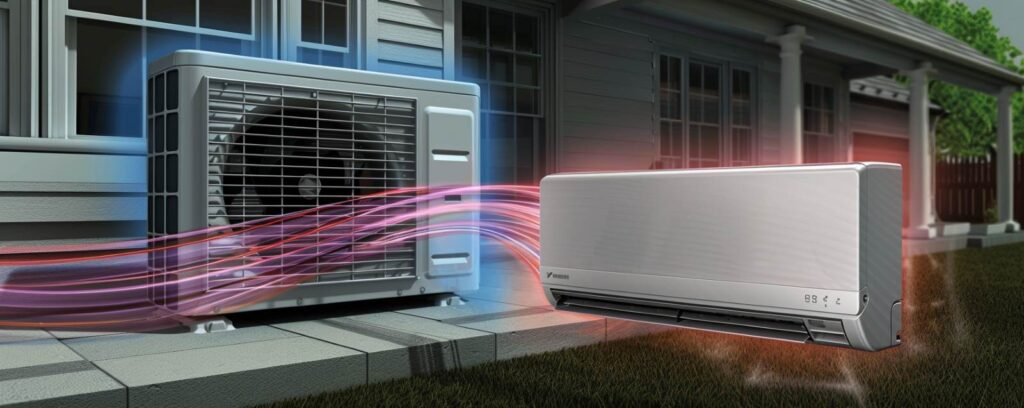If you’re considering a career in heating, ventilation, and air conditioning (HVAC), understanding the HVAC school length is a crucial first step. The duration of HVAC training programs can vary significantly based on the type of education you pursue. Whether you’re aiming for a quick entry into the workforce or seeking comprehensive training for advanced opportunities, knowing how long HVAC school takes will help you plan your path effectively.
Understanding HVAC School Length
When exploring a career in HVAC, it’s essential to understand the HVAC school length and how it aligns with your professional goals. The duration of HVAC training programs can vary widely, typically ranging from six months to four years. This variance depends on the type of credential you pursue, whether it’s a certificate, an associate degree, or even a bachelor’s degree. Below, we break down the different educational paths to help you determine which HVAC school length suits your needs.
Certificate Programs
Duration: Usually 6 months to 1 year.
Certificate programs offer a fast-track option for those eager to enter the HVAC field quickly. These programs focus on the fundamental skills required for entry-level positions. You’ll learn about basic electrical systems, refrigeration principles, and safety protocols. The shorter HVAC school length means you can start working sooner, but it may limit opportunities for advancement without further education.
Associate Degree Programs
Duration: Typically 2 years.
An associate degree in HVAC provides a more comprehensive education, combining technical HVAC training with general education courses like math, science, and communication. This program is ideal if you’re looking for a balance between hands-on skills and theoretical knowledge. The HVAC school length here allows for a deeper understanding of the field, which can open doors to supervisory roles in the future.
Apprenticeships
Duration: Approximately 3 to 5 years.
Apprenticeships blend on-the-job training with classroom instruction. You’ll work under the guidance of experienced HVAC technicians while also attending classes. Although the HVAC school length is longer for apprenticeships, the advantage is earning a wage while you learn. This path is excellent for those who prefer practical experience over a traditional classroom setting.
Bachelor’s Degree Programs (Optional)
Duration: About 4 years.
For individuals aiming for advanced positions or specialties like HVAC engineering, a bachelor’s degree may be the right choice. While not commonly required for standard HVAC roles, this extended HVAC school length provides in-depth knowledge of system design, energy management, and may include business courses for those interested in management positions.
Factors That Influence HVAC School Length
When planning your education, it’s important to recognize that several factors can affect the HVAC school length. Understanding these elements will help you choose a program that fits your lifestyle and career objectives.
Full-Time vs. Part-Time Enrollment
Schedule Flexibility and Its Impact
- Full-Time Programs: Enrolling full-time is the quickest path to complete your HVAC training. This option is ideal if you can dedicate most of your time to schooling, potentially reducing the HVAC school length.
- Part-Time Programs: If you have work or family commitments, part-time enrollment offers flexibility but extends the duration of your studies. This choice increases the HVAC school length, allowing you to balance other responsibilities.
Online vs. On-Campus Programs
Learning Environment and Completion Time
- Online Programs: Online HVAC courses provide flexibility to learn at your own pace. While they may shorten the HVAC school length for self-motivated students, the lack of hands-on training can be a drawback.
- On-Campus Programs: Traditional classroom settings offer structured schedules and direct access to instructors and equipment. This environment may lengthen the HVAC school length due to fixed class times but provides comprehensive hands-on experience.
Prior Experience and Transfer Credits
Accelerating Your Education
- Work Experience: If you’ve previously worked in a related field, you might be eligible for credit towards your HVAC program, reducing the overall HVAC school length.
- Transfer Credits: Academic credits from other institutions or programs can sometimes be transferred. This can shorten the HVAC school length by fulfilling certain course requirements.
Specializations and Certifications
Additional Training Requirements
- Specialized Certifications: Pursuing certifications like EPA Section 608 or North American Technician Excellence (NATE) can extend your HVAC school length but enhance your employability.
- Advanced Specializations: Focusing on niches such as solar heating or commercial refrigeration may require extra courses, increasing the HVAC school length but providing a competitive edge in the job market.
What to Expect During HVAC Training
Understanding the specifics of your education goes hand-in-hand with knowing the HVAC school length. While the duration of your program is important, what you learn during that time is crucial for your future career. Here’s what you can expect during HVAC training, regardless of the program’s length.
Curriculum Highlights
The coursework in HVAC programs is designed to provide a comprehensive understanding of the field. Core subjects typically include:
- Refrigeration Principles: Learn about the refrigeration cycle, types of refrigerants, and how cooling systems operate.
- Electrical Systems: Study electrical theory, circuitry, and components essential for HVAC equipment.
- Heating Systems: Understand various heating technologies like furnaces, boilers, and heat pumps.
- Ventilation and Air Quality: Explore how to maintain indoor air quality through proper ventilation and filtration systems.
- Safety Protocols: Gain knowledge about industry safety standards, including handling hazardous materials and using protective equipment.
- Environmental Regulations: Familiarize yourself with EPA guidelines and environmental laws impacting the HVAC industry.
These subjects ensure that, regardless of the HVAC school length, you receive a well-rounded education that prepares you for real-world challenges.
Hands-On Training
Practical experience is a critical component of HVAC education. Programs often include:
- Laboratory Work: Engage in simulated environments where you can apply theoretical knowledge.
- Equipment Handling: Get accustomed to using tools and machinery commonly found in the industry.
- Troubleshooting Exercises: Develop problem-solving skills by diagnosing and repairing HVAC systems.
- System Installation: Learn the step-by-step process of installing various HVAC units.
Hands-on training may vary depending on the HVAC school length, but it’s essential for building confidence and competence in your skills.
Internships and Externships
Some HVAC programs incorporate internships or externships, which can affect the overall HVAC school length but offer valuable industry experience.
- Real-World Experience: Work alongside experienced technicians to apply what you’ve learned.
- Networking Opportunities: Build relationships with professionals that can aid in job placement after graduation.
- Enhanced Learning: Exposure to real-life scenarios that can’t be replicated in a classroom setting.
Participating in internships may extend the HVAC school length, but the benefits often outweigh the additional time commitment.
Additional Considerations
When planning your educational journey, it’s important to look beyond the HVAC school length and consider other factors that can impact your experience and future career. These additional considerations can influence not only how long you’ll be in school but also how well-prepared you’ll be to enter the HVAC industry.
Cost of HVAC School
Understanding the Financial Commitment
The cost of HVAC training programs can vary widely based on several factors, including the type of credential, the school’s location, and the program’s duration. Generally, shorter programs like certificates have a lower upfront cost due to their shorter HVAC school length, while longer programs like associate or bachelor’s degrees require a more significant investment.
- Tuition and Fees: Certificate programs can range from $1,000 to $15,000, while associate degrees may cost between $15,000 and $35,000. Bachelor’s degrees can exceed $40,000.
- Financial Aid Options: Scholarships, grants, and loans are available to help offset costs. Some schools offer financial aid specifically for HVAC students.
- Hidden Costs: Don’t forget to account for expenses like textbooks, tools, uniforms, and lab fees, which can add to the overall cost.
- Return on Investment: Consider how the HVAC school length and cost align with your long-term earning potential and career goals.
Job Placement Services
Supporting Your Transition into the Workforce
A school’s job placement services can be a critical resource as you near the end of your HVAC school length. These services can significantly impact your ability to secure employment quickly after graduation.
- Resume Assistance: Get help crafting a professional resume that highlights your skills and training.
- Interview Preparation: Schools may offer mock interviews and coaching to boost your confidence.
- Industry Connections: Institutions with strong ties to HVAC companies can provide networking opportunities and job leads.
- Placement Rates: Research the school’s job placement rates to gauge how effectively they assist graduates in finding work.
Continuing Education
Advancing Your Career Beyond Initial Training
The HVAC industry is constantly evolving due to technological advancements and changing regulations. Continuing education is essential for career growth and can affect your initial decisions about HVAC school length.
- Certifications and Licenses: Obtaining additional certifications like EPA 608 or NATE can enhance your qualifications but may require extra time and study.
- Specializations: Focusing on areas like green technology or commercial HVAC systems can set you apart but may extend your training period.
- Lifelong Learning: Stay updated with industry trends through workshops, seminars, and online courses, which can be pursued even after completing your initial HVAC school length.
- Career Advancement: Additional education can open doors to supervisory roles, management positions, or even starting your own business.
Frequently Asked Questions
Can I work while attending HVAC school?
Answer: Yes, you can work while attending HVAC school. Many programs offer flexible scheduling options, such as evening or weekend classes, to accommodate working students. However, opting for part-time enrollment can extend your overall HVAC school length. Balancing work and study requires good time management skills, but it allows you to gain industry experience and manage your finances simultaneously. Keep in mind that the added responsibilities might affect how quickly you complete your HVAC training.
Is online HVAC training effective?
Answer: Online HVAC training can be effective for the theoretical components of your education. It offers flexibility and can sometimes shorten your HVAC school length if you progress quickly through the material. However, HVAC is a hands-on field, and practical experience is crucial. Many online programs supplement coursework with in-person lab sessions or require on-site apprenticeships to ensure you gain necessary hands-on skills. When considering online training, verify that the program is accredited and provides opportunities for practical experience to fully prepare you for the workforce.
Do I need a license to work in HVAC?
Answer: Licensing requirements for HVAC technicians vary by state and locality. In many regions, you are required to obtain certain licenses or certifications before you can legally work, which can add to your HVAC school length.
- EPA Section 608 Certification: Federally mandated for anyone handling refrigerants. This certification is often included in HVAC programs but may require additional study.
- State Licenses: Some states require you to pass an exam and complete a set number of training hours or years of experience.
- Specialty Certifications: Additional certifications, like those from North American Technician Excellence (NATE), can enhance your credentials but may extend your training time.
It’s important to research the specific requirements in your area to ensure compliance and understand how they might affect your HVAC school length.
What is the difference between a certificate and a degree in HVAC?
Answer: The primary differences lie in the HVAC school length, depth of study, and career opportunities.
- Certificate Programs
- Duration: 6 months to 1 year.
- Focus: Concentrated on essential HVAC skills for entry-level positions.
- Career Path: Quick entry into the workforce but may limit long-term advancement without further education.
- Associate Degree Programs
- Duration: Approximately 2 years.
- Focus: Combines HVAC training with general education courses.
- Career Path: Opens doors to supervisory roles and provides a foundation for continued education.
- Bachelor’s Degree Programs
- Duration: About 4 years.
- Focus: In-depth study, including system design and energy management.
- Career Path: Suitable for advanced positions, research roles, or specialized fields within HVAC.
Choosing between a certificate and a degree depends on your career goals, how much time you can commit, and how the HVAC school length fits into your plans.
Making Your Decision
Choosing the right HVAC school length is a crucial step toward launching a successful career in the heating, ventilation, and air conditioning industry. Whether you prefer a swift entry into the workforce or aim for comprehensive knowledge with long-term benefits, aligning your educational path with your career goals is essential.
Consider the following when making your decision:
- Personal Commitments: Assess how full-time or part-time enrollment will fit into your current lifestyle. Remember, part-time studies can extend the overall HVAC school length but offer flexibility.
- Career Objectives: Determine whether you aspire to start working quickly or if you’re interested in advanced positions that may require longer training periods.
- Financial Factors: Evaluate the cost implications of different programs. Longer HVAC school lengths often mean higher tuition but can lead to better job prospects and earning potential.
- Learning Preferences: Decide if you thrive in hands-on environments like apprenticeships or prefer structured academic settings like degree programs.
By thoroughly evaluating these factors, you can select an HVAC school length that not only meets your immediate needs but also sets you up for future success.
Taking the Next Steps
Now that you have a comprehensive understanding of how various factors influence the HVAC school length, it’s time to take actionable steps:
- Research Programs: Look into accredited schools and training centers that offer the type of HVAC program you’re interested in. Pay attention to the curriculum, faculty qualifications, and facilities.
- Visit Campuses: If possible, schedule visits to the schools you’re considering. This will give you a feel for the environment and resources available, helping you gauge if it’s the right fit.
- Consult Professionals: Speak with current HVAC technicians or industry professionals. Their insights can provide valuable perspectives.
- Explore Financial Aid: Investigate scholarships, grants, and loan options that can make your education more affordable, regardless of the program length.
- Plan for the Future: Consider continuing education opportunities that can further enhance your skills and career prospects.
Embarking on an HVAC training program is a significant commitment, but with careful planning and consideration, you can choose a path that aligns with your personal and professional aspirations.




